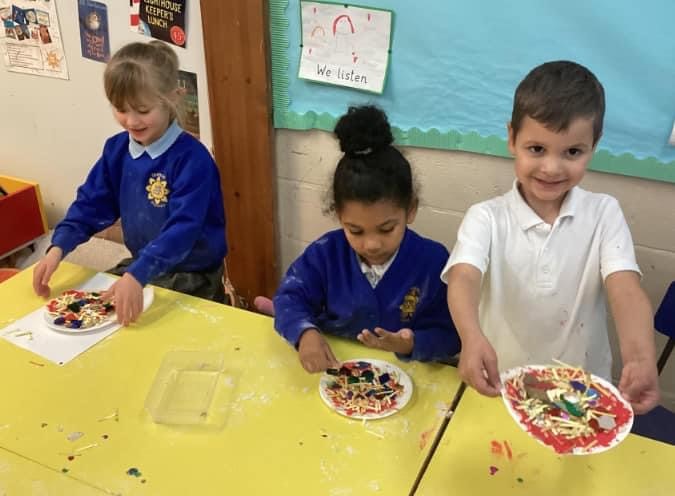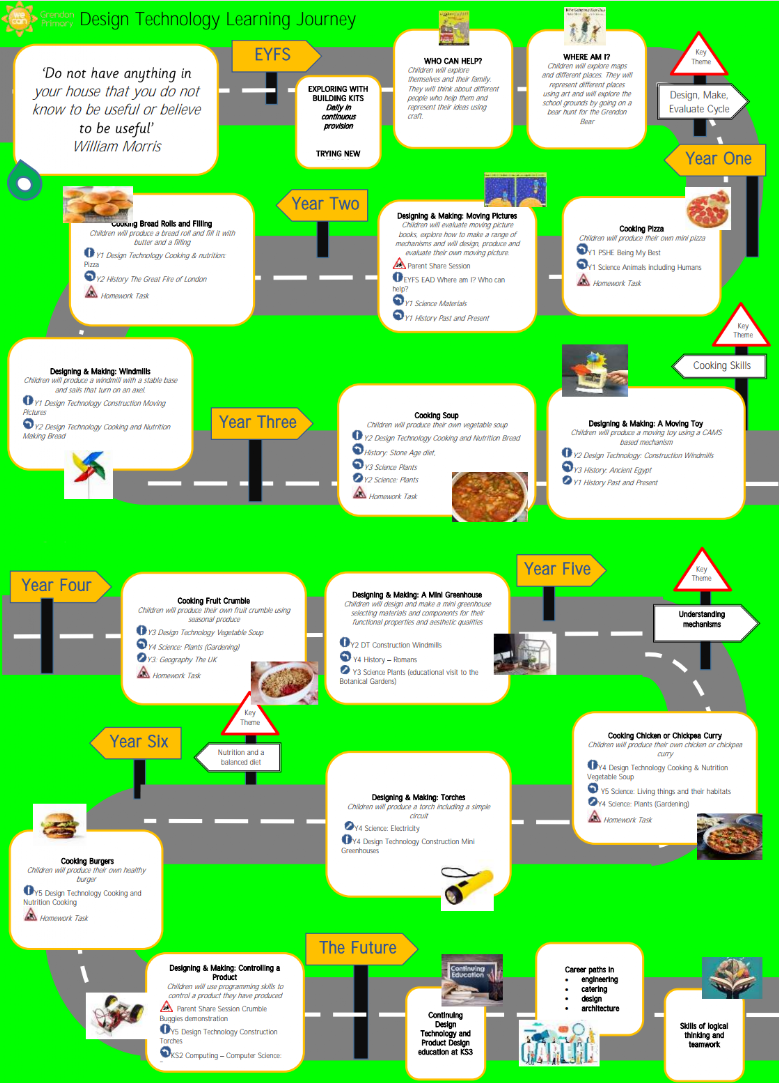Design & Technology
"Have nothing in your house that you do not know to be useful or believe to be beautiful”
William Morris
Design and technology is an inspiring, rigorous and practical subject. Using creativity and imagination, pupils design and make products that solve real and relevant problems within a variety of contexts, considering their own and others’ needs, wants and values. They acquire a broad range of subject knowledge and draw on disciplines such as mathematics, science, engineering, computing and art. Pupils learn how to take risks, becoming resourceful, innovative, enterprising and capable citizens. Through the evaluation of past and present design and technology, they develop a critical understanding of its impact on daily life and the wider world. High-quality design and technology education makes an essential contribution to the creativity, culture, wealth and well-being of the nation.

WE CAN provide teaching that develops knowledge and skills so children can learn and progress effectively
DT is taught in two blocked units each year. Content from the National Curriculum has been divided between the year bands to ensure that DT skills are introduced progressively and children have opportunities to revisit what they have learnt before. All strands of learning including Cooking and Nutrition and Designing and Making are taught.
Decisions regarding sequencing follow a clear rationale. Cooking is taught in every year group as this is an essential life skill. In Designing and Making, children are taught to construct increasingly complex products with each building on their prior learning. For example in Year 2 children produce a strong base for their windmill while in Year 4 the strong frame of their greenhouse has to also fulfil the criteria of looking attractive.
Designing and making construction units link to the wider curriculum. Vertical links embed learning in the same subject across year groups or units. For example, in KS1 children cook pizza in Year 1 and the skill of kneading is then built upon in Year 2 when children produce their own bread roll.
Horizontal links link learning in the same year group with another curriculum subject. For example, in UKS2, Year 6 children use the programming skills they have learnt in Computing to program their crumble buggies.
Diagonal links link learning in a different year group with another curriculum area. For example, in LKS2, Year 3 produce a moving toy using a CAMS based mechanism which builds on their prior knowledge of how toys worked in the past studied in Year 1 History.
At Grendon, a good DT lesson will employ the principles of the 5 a day approach including a review of previous learning, introduction of vocabulary and tasks scaffolded at appropriate levels. Children will be encouraged to develop Grendon’s Goals such as Independence and Resilience.
It is our intent that DT lessons include memorable chocolate chip events and activities which enrich learning. DT forms part of our programme of curriculum enrichment. In Year 1 as part of their moving pictures unit, a Parent Share Session is held. In Year 6, parents are again invited into school for a Parent Share Session where children are able to demonstrate their Crumble Buggies.
WE CAN offer enriching activities, event and experiences
DT sometimes forms part of our Whole School Days and Junior Leadership Days. Children working on the Fiver challenge in Year 6 may need to apply their DT skills to their enterprise project. Children may use DT skills during their Feel Good Friday activities.
WE CAN work together to remove barriers and ensure equality
It is our intent that DT teaching develops the skills of all children from their starting point. For pupils with EAL the experience of cooking or building is a universal one that they can engage in without a language barrier. Where needed, children with special educational or sensory needs are supported to engage with lessons and record their ideas in an accessible way so they are able to achieve. Children who demonstrate a particular talent for DT, will be offered learning opportunities to challenge them to their full potential.
WE CAN build independent and resilient learners who are able to communicate confidently
It is our intent that Grendon’s Goals of independence, resilience and communication are embedded in DT teaching.
Children are encouraged to work towards a design brief, meet design criteria and explore their own ideas in DT lessons. Scaffolding supports children to achieve this with increasing independence across the school.
The process of developing a product has evaluation and re-drafting built in and children are supported in this process and encouraged to employ a resilient growth mindset.
Shared design work gives pupils a clear purpose for expressing their ideas and presents real opportunities for children to apply communication strategies to team work.
WE CAN listen to and treat each other and all members of the community with respect, tolerance and concern
It is our intent that through DT learning, children demonstrate respect, tolerance and concern for others. This is especially true during the evaluation phase of a project where children learn about using supportive language, sharing feedback sensitively and celebrating others’ successes.
WE CAN recognise ability, maximise potential and prepare children well for their future and life in modern Britain
It is our intent that our DT teaching will prepare children for their futures. Skills learnt in DT are life skills which will allow children to feed themselves and understand how things work in their adult lives. Children learn to work through the various stages of a project, this experience is transferable to other real-life project based work.
It is our intent that our DT curriculum sets the foundations for pupils continuing with DT in their secondary schooling.
An interest in DT at primary school may lead children into design, catering, architecture or engineering in their future lives.
Online Learning
Complete a project from the Design Museum
Learn more about Design Technology from the BBC Here or Here










